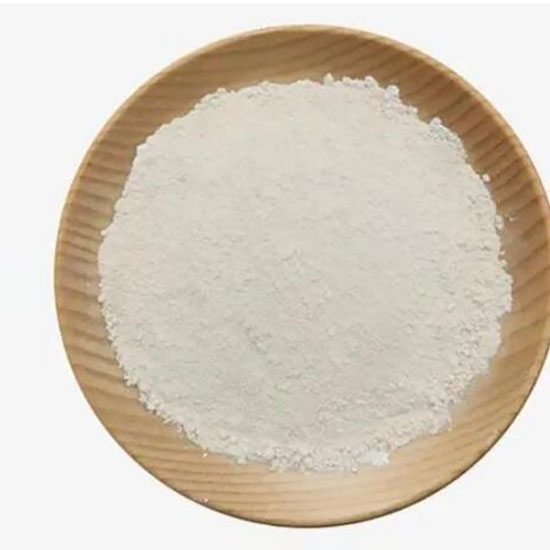-

D-(+)-Galactose CAS:59-23-4 Manufacturer Price
D-(+)-Galactose is a monosaccharide sugar and an important component of many biological processes. It is a naturally occurring sugar found in many foods, such as fruits, dairy products, and vegetables.
Galactose is commonly metabolized in the body through a series of enzymatic reactions. It plays a vital role in cell communication, energy production, and the biosynthesis of important molecules like glycolipids, glycoproteins, and lactose.
In terms of its applications, D-(+)-Galactose is commonly used in microbiology and biotechnology as a carbon source in culture media for the growth of various microorganisms. It is also used in the production of various bioactive compounds, pharmaceuticals, and food products. Additionally, it is frequently used as a medical diagnostic agent, particularly in tests for assessing the liver function and detecting genetic disorders related to galactose metabolism.
-

beta-D-Galactose pentaacetate CAS:4163-60-4
Beta-D-Galactose pentaacetate is a chemical compound derived from galactose, a monosaccharide sugar. It is formed by acetylating each hydroxyl group of the galactose molecule with five acetyl groups.
This compound is often used as a protective agent for galactose in various chemical reactions and synthetic processes. The pentaacetate form helps to stabilize galactose and prevent unwanted reactions or transformations during reactions.
Additionally, this compound can be used as a precursor for the synthesis of other galactose derivatives. The acetyl groups can be selectively removed to obtain different galactose derivatives with specific functional groups.
-

5-Bromo-4-chloro-3-indolyl-beta-D-glucuronide sodium salt CAS:129541-41-9
5-Bromo-4-chloro-3-indolyl-beta-D-glucuronide sodium salt is a chemical compound commonly used in laboratory research and diagnostics. It is often referred to as X-Gluc and is widely used as a substrate for the detection of beta-glucuronidase enzyme activity.
When beta-glucuronidase is present, it cleaves the glucuronide bond in X-Gluc, resulting in the liberation of a blue dye called 5-bromo-4-chloro-3-indolyl. This reaction is commonly used to visually or spectrophotometrically detect the expression of the beta-glucuronidase enzyme in cells or tissues.
The sodium salt form of X-Gluc improves its solubility in aqueous solutions, facilitating its use in laboratory assays. X-Gluc is mainly used in molecular biology research to study gene expression, promoter activity, and reporter gene assays. It can also be used to detect the presence of beta-glucuronidase-producing organisms, such as certain bacteria, in microbiological studies.
-

4-Nitrophenyl-beta-D-xylopyranoside CAS:2001-96-9
4-Nitrophenyl-beta-D-xylopyranoside is a chromogenic substrate used in enzymatic assays to detect and measure the activity of enzymes called beta-xylosidases.
-

4-NITROPHENYL-ALPHA-D-MANNOPYRANOSIDE CAS:10357-27-4
4-Nitrophenyl-alpha-D-mannopyranoside is a compound used in biochemistry and molecular biology research as a substrate for the detection and measurement of enzyme activity.
-

1,4-Dithioerythritol (DTE) CAS:6892-68-8
Dithioerythritol (DTE) is a compound commonly used in biochemical and molecular biology research. It is a reducing agent that has the ability to break disulfide bonds, which are important for protein structure and stability. DTE is particularly useful in sample preparation and protein purification as it helps to maintain proteins in their reduced and active forms. It can also be used to protect thiol groups on proteins from oxidation. Additionally, DTE has antioxidant properties and can scavenge free radicals, making it valuable in various oxidative stress experiments.
-

Hydrogenated Tallowamine CAS:61788-45-2
Hydrogenated tallowamine is a chemical compound that belongs to the amine family. It is derived from tallow, which is a fat obtained from animal sources. Hydrogenated tallowamine is commonly used in various industries and applications due to its surfactant properties.
As a surfactant, hydrogenated tallowamine is able to reduce the surface tension of liquids, allowing them to spread more easily and evenly. This makes it a desirable ingredient in products such as detergents, fabric softeners, and cleaning agents, where it helps to enhance the cleaning and foaming properties.Additionally, hydrogenated tallowamine can act as an emulsifying agent, helping to stabilize mixtures of oil and water, or other immiscible compounds. This makes it valuable in the formulation of cosmetics, paints, and agricultural products, where it facilitates the even distribution of ingredients and improves the overall product performance.

